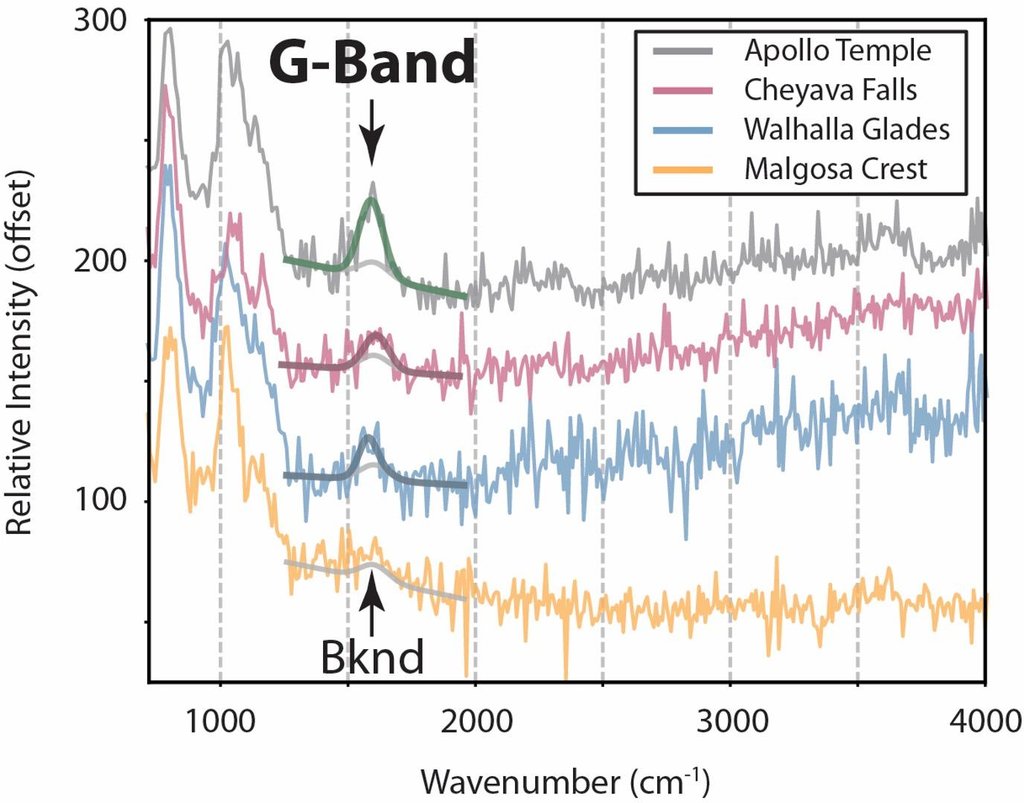Perseverance's SHERLOC Finds Organic Molecules in 'Bright Angel'
This graph displays data collected by NASA's Perseverance Mars rover from targets in a rock formation nicknamed "Bright Angel." Scientists later determined one of those targets, a rock nicknamed "Cheyava Falls" (second line from the top), contained a potential biosignature. A potential biosignature is a substance or structure that might have a biological origin but requires more data or further study before a conclusion can be reached about the absence or presence of life.
The graph includes "G-bands" – a type of signal in Raman spectroscopy – indicating the presence of organic molecules, which can be created by both geological as well as biological sources. ("Bknd" is shorthand for "background.") The data was collected by an instrument on the end of Perseverance's robotic arm called SHERLOC (Scanning Habitable Environments with Raman & Luminescence for Organics & Chemicals).
A key objective for Perseverance's mission on Mars is astrobiology, including the search for signs of ancient microbial life. The rover is characterizing the planet's geology and past climate, to help pave the way for human exploration of the Red Planet, and is the first mission to collect and cache Martian rock and regolith.
The Mars 2020 Perseverance mission is part of NASA's Mars Exploration Program (MEP) portfolio and the agency's Moon to Mars exploration approach, which includes Artemis missions to the Moon that will help prepare for human exploration of the Red Planet.
Managed for NASA by Caltech, JPL built and manages operations of the Perseverance rover on behalf of the agency's Science Mission Directorate as part of NASA's Mars Exploration Program portfolio.
For more about Perseverance:
